During this time of fiscal cliffs, debt ceilings and economic uncertainty, I feel fortunate to be involved everyday with economic activities that are working. I am referring to entrepreneurs and communities that are thriving through clean economy innovations. Their success shows that imbedded in this Great Recession is an opportunity to reinvent ourselves, to create a stronger, more resilient economy and a reinvigorated American Dream.
Such bold innovation and reinvention is in our American cultural DNA. We did it when we harnessed the power of oil in 1859. We did it during the Industrial Revolution when we created mass production. We did it after the Great Depression when we built the Hoover Dam and the Golden Gate Bridge. And we did it when we tapped the creativity of the space race to develop myriad new products and companies.
We can do it again now. In fact, a lot of entrepreneurs, local and state governments already are capitalizing on the opportunities within the emerging clean economy. West Coast states have long been clean economy leaders and are now reaping the rewards.
Last spring John (aka Governor Kitzhaber) and I traveled to British Columbia to meet with BC Premier Christy Clark, Washington's Governor Gregoire and John Laird, Natural Resources Advisor for Governor Brown. The four leaders signed a joint resolution to accelerate clean economy development.
Their action was supported by a new report titled, "The West Coast Clean Economy: Opportunities for Investment and Accelerated Job Creation," which provides compelling evidence that the clean economy is working; it is producing jobs more quickly, paying better and has been more recession-proof than the economy in general.
More than 500,000 Pacific Coast residents are cashing clean economy paychecks right now. Clean economy sectors including renewable energy, energy efficiency and green building, clean transportation and environmental protection and resource management are already contributing $47 billion to the region's GDP. Over the next eight years, clean economy sectors could generate over one million net new jobs, and a GDP contribution of $143 billion on the West Coast alone.
Across the nation the clean economy is reinvigorating American manufacturing. Over the last six years, production of wind turbine components has grown 12-fold to more than 400 facilities in 43 states. Miles Fiberglass, once a leading manufacturer of parts for motor homes is now a leading maker of parts for wind turbines and wave energy buoys. United Streetcar, a subsidiary of Oregon Iron Works, is a leading producer of new generation, highly-efficient streetcars. Their dynamic CEO, Chandra Brown, who I sometimes refer to as the Rosie the Riveter of our generation, stated, "We believe firmly in the need to out-build, out-innovate, and out-educate and know that the success of domestic manufacturing is critical to the success of our great nation."
Along with entrepreneurs, local communities are a driving force in economic reinvention. Farmers in Sherman County, Oregon are harvesting wheat and wind. "Wind farms have brought more than $17 million in property taxes and investments into Sherman County," said Judge Gary Thompson, Sherman County Board of Commissioners. "That translates to meeting essential community needs like fire departments and health services, new supplies for students, and capital projects like construction of a new school, library and city hall." Sherman County is the only county in the nation that makes payments to residents based on revenue from wind energy. In 2011, each household received $590.
Lakeview, Ore., is another great example. When the downturn in the timber industry hit this small timber and ranching town, they got busy reinventing. They branded their community the "New Energy Frontier", and through development of local geothermal, solar and biomass resources are on a path to becoming one of the first clean energy exporting communities in the nation. In spring of 2011 they were selected as a finalist in the Greatest American Cities competition and asked me to join their team. Our group included a rancher, a horsewoman, a college student, me (the First Lady of a Democrat governor that received very few votes in Lake County) and the conservative, kilt-wearing mayor! Evidence, that at least at the community level, the clean economy can unite our nation.
In Vernonia, Ore., timber-producing families were facing pressure to sell off timber lands to developers in order to pay for health care for their families. Many of these families had been in the community and the logging industry for generations. They didn't want to give up their way of life so a number of families banded together, implemented sustainable forestry practices and pooled the resulting carbon sequestration to sell carbon credits. They are using that revenue to pay for health care and to fund a community health clinic.
Clean economy benefits span the income spectrum. Oregon Coast Community Action is providing solar electricity to over 100 low-income households in a hard-hit rural area suffering high unemployment, poverty and hunger rates.
The solar projects created 11 local jobs during installation, resulting in a $350,000 payroll for workers and over $1 million distributed throughout the local economy. Over the next 25 years, the cost savings are projected to be $1.2 million. This means more disposable income for residents to improve their living conditions and meet other needs.
I think it's very important to remember that the economy is a human-made construct. We invented it and we can reinvent it. Making the transition to an innovative, resilient clean economy is right in line with the pioneering, get-it-done American style that made us a great nation in the first place. If we really lean into this we will simultaneously increase prosperity for our people, reinvigorate the American Dream, and restore this magnificent blue planet. This is the greatest challenge and opportunity of our lifetime.
